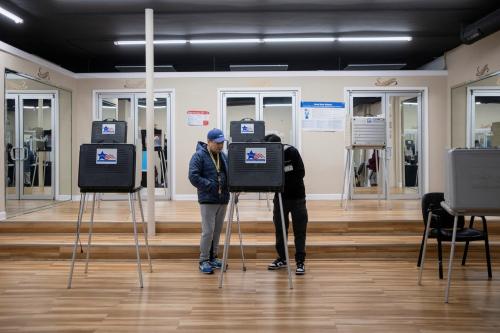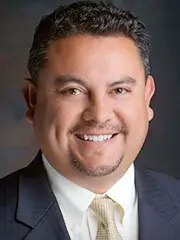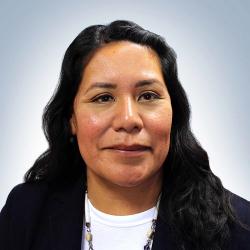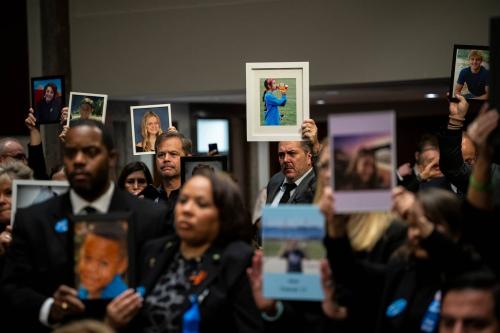This election season, Native American voters will play an important role by influencing the outcome of several Senate and congressional races across the country, which also means they will influence who wins electoral college votes in several states. What remains unknown is how the two major presidential candidates will respond to top issues affecting Native American voters and their communities.
Often, Native American voters are ignored by presidential candidates, and pre-election survey data—with large enough Native American samples—seldom afford the opportunity to include this important electorate in discussions about their policy priorities and how campaigns can mobilize Native American voters. To help ensure that Native American communities are not ignored in the early stages of the 2024 presidential race, we can investigate data from the First Nations Development Institute’s National Survey of Native American Justice (n=1,600), fielded in the fall of 2023. The data shed light on the policy priorities of Native Americans.1
Data from this survey indicate that both political parties should pay attention to the policy issues Native American communities find important, as they are distinct from the priorities of non-Indigenous Americans.
High rate of missing and murdered Indigenous women, land, and water rights are key priorities for Native Americans, particularly Native American women
The survey asked respondents what they perceive to be the most important issues that Native American communities face. As reflected in Figure 1, below, 37 percent of respondents in this national sample of Native Americans say that “The high rate of missing and murdered Indigenous women (MMIW)” is the most salient issue. Although this is an issue that has garnered more attention from policymakers in recent years, it has been absent from this campaign season’s dialogue.
Following MMIW, the next most important issue is “land rights for Native American people,” selected by 32 percent of respondents. When combined with “water rights and protecting access to water” (28 percent), it is clear that the protection of land and water rights, including access to clean water for Native Americans across the country, are top priorities for Tribal communities.
Although there has been some policy action on these issues, which is discussed below, they are largely absent from the national political narrative in the early stages of the 2024 presidential campaign.
Rounding out the top set of priorities of the national sample of Native Americans is “economic development on reservations” which 29 percent of respondents chose. Native people and Native Nations have been devastated economically by the pandemic-driven recession and have faced a host of structural challenges when it comes to advancing their economic well-being, especially on Tribal lands.
Within the top issues affecting Native American communities, there are some noteworthy gender differences. As reflected in Figure 2, more women than men selected the high rate of MMIW as the most important issue, with 44 percent of Native American women and 30 percent of Native American men choosing this issue. More women (34 percent) than men (29 percent) identified land rights for Native Americans as the top issue. On the other hand, more Native American men (32 percent) than women (25 percent) selected economic development on reservations as an important issue facing Native American communities.
High levels of support exist from non-Native Americans for policies to address these challenges
In addition to the survey of Native American voters, First Nations Development Institute conducted a national survey of non-Native Americans to understand the level of support the public has for Native American history and issues. First Nations Development Institutes’ 2023 National Survey of non-Native Americans (n=3,300) found that there is very limited awareness of Native American issues among the general public, but there are high levels of public support for policies to address challenges facing Native American communities, particularly after respondents were provided with some basic education about certain issues.
For instance, nearly 3 out of 4 (74 percent) non-Native American respondents agreed that the federal government should “ensure that Native American Tribes have the final say when negotiating with the federal government or states in matters that could affect their water, land, or other natural resources.” However, there is a significant partisan divide, with Democrats expressing higher support (+14 percent) than Republicans. Overall, a robust 69 percent of non-Native American Republicans and Independents also support giving Tribes the final say in issues affecting their water, land, and other natural resources.
There is also wide support among non-Native Americans to provide resources to help improve economic development opportunities for Native American communities. For instance, 73 percent of Americans say they support increasing the amount of money the United States spends to reduce poverty, improve health care, and improve educational opportunities within Native American communities. The majority of non-Native Americans (61 percent) also support the government “providing business and industry special tax breaks for locating Tribal areas or reservations.”
One of the goals of First Nations’ 2023 National Survey was to evaluate whether providing Americans with basic information about some salient Native American policy issues helped improve support for policies important to Native Americans. This includes MMIW, the issue identified as the most important to Native Americans.
As part of the survey’s quasi-experimental design, half of the survey respondents were provided with the following factual prompt about MMIW: “In the United States, violence against Native American women is higher than violence against women in all other racial and ethnic groups. In fact, 85% of Native American women report experiencing violence including sexual assault, domestic violence, and rape over the course of their lifetime and Native American women are three times more likely to be murdered than White women.”
Though there has been some national- and state-level attention paid to this issue of late, over half (52 percent) of respondents in the survey indicated that this was the first time they had heard about this issue. An overwhelming majority of respondents (75 percent) agreed that violence against Native American women in the United States is a problem and that more government resources should be dedicated to addressing violence directed at Native American women. However, support increased substantially for respondents who were provided with the factual and educational prompt when compared to the control group who did not receive any additional background information regarding MMIW. Support to increase resources to address MMIW increased 7 percent across the overall population, but jumped 14 percent among Republicans, with 76 percent of Republicans who were provided the educational prompt supporting investment in more government resources to address MMIW. A similar 11 percent increase exists in the percentage of Americans who believe the problem of violence against Native American women in the United States is important—perceived importance went up from 75 percent to 86 percent when the educational prompt was included. The perceived importance of violence against Native American women increased by 19 percent among self-identified conservatives (reaching 86 percent).
The results suggest that support for addressing challenges facing Native Americans among non-Native Americans is not only high, but for violence directed at Native American women, support increases substantially when factual information about MMIW is included. This is particularly the case for conservative and Republican Americans respondents.
How have the presidential candidates fared on Native American issues?
This blog identifies the most important issues facing Tribal communities as defined by Native Americans themselves, and provides strong evidence that Americans from other racial and ethnic groups overwhelmingly support policies aimed at addressing those challenges. In closing, a look at past actions in this area from the two projected 2024 presidential candidates are examined.
In 2021, President Biden issued an executive order that directed several federal departments to create strategies to address the alarmingly high rate of MMIW. More recently, President Biden issued a proclamation to recognize the importance of this issue. When he was in office, former President Trump also took similar symbolic action on MMIW, establishing a task force to address the issue, which was met with mixed reactions across Indian Country.
President Biden and other top federal officials in his administration have vowed to do a better job of working with Native American leaders and incorporating Tribal voices into land preservation efforts and resource management planning. But, many Native communities are still fighting for a substantive government response on MMIW and other issues, including land and natural resource management. For example, Native communities are working to steward and manage newly created national monuments in Utah and Arizona. In New Mexico, Native people have succeeded in getting the Interior Department to ban new oil and natural gas development on culturally-significant lands. But in other places, like Nevada, Tribes are still fighting against uranium mining on culturally significant land.
These are the most salient challenges Native American communities are facing. This information is particularly useful for both political parties to learn from, given that research has consistently found that Native Americans tend to make strategic voting choices based on perceptions of which candidate is going to do a better job advancing the interests of their communities. Given that several policy interventions aimed at addressing these challenges have high levels of support across the country, candidates should feel confident that taking action will be rewarded by voters.
-
Footnotes
- The survey data referenced herein was produced independently by a third-party firm, BSP Research, on behalf of the African American Research Collaborative. In addition to his work at Brookings, Dr. Gabriel Sanchez serves as Director of Research for BSP Research and he was a part of the group of scholars who designed and implemented this survey.











Commentary
Murdered and missing women is the top issue facing Native American communities heading into the 2024 elections
February 15, 2024